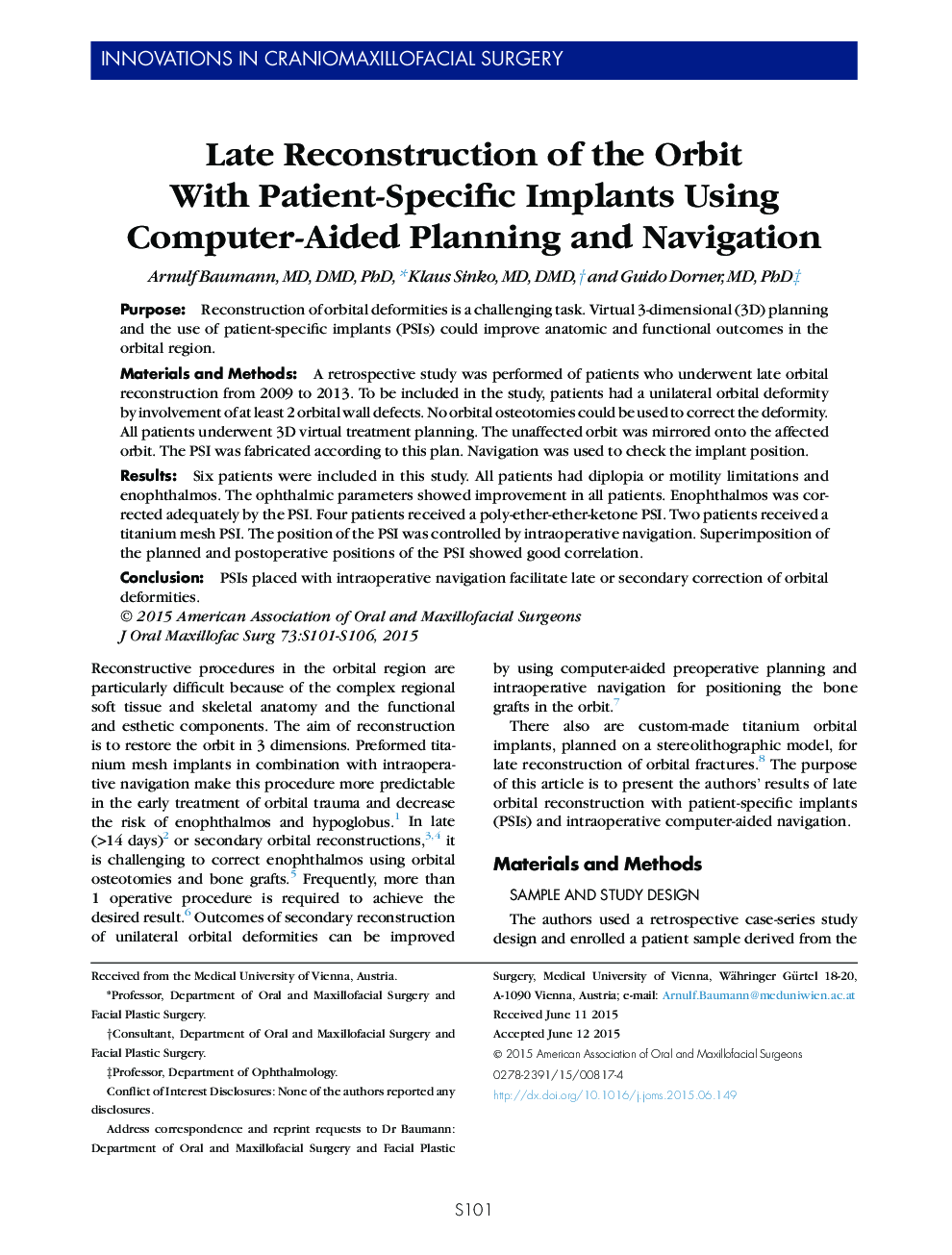| Article ID | Journal | Published Year | Pages | File Type |
|---|---|---|---|---|
| 3152124 | Journal of Oral and Maxillofacial Surgery | 2015 | 6 Pages |
PurposeReconstruction of orbital deformities is a challenging task. Virtual 3-dimensional (3D) planning and the use of patient-specific implants (PSIs) could improve anatomic and functional outcomes in the orbital region.Materials and MethodsA retrospective study was performed of patients who underwent late orbital reconstruction from 2009 to 2013. To be included in the study, patients had a unilateral orbital deformity by involvement of at least 2 orbital wall defects. No orbital osteotomies could be used to correct the deformity. All patients underwent 3D virtual treatment planning. The unaffected orbit was mirrored onto the affected orbit. The PSI was fabricated according to this plan. Navigation was used to check the implant position.ResultsSix patients were included in this study. All patients had diplopia or motility limitations and enophthalmos. The ophthalmic parameters showed improvement in all patients. Enophthalmos was corrected adequately by the PSI. Four patients received a poly-ether-ether-ketone PSI. Two patients received a titanium mesh PSI. The position of the PSI was controlled by intraoperative navigation. Superimposition of the planned and postoperative positions of the PSI showed good correlation.ConclusionPSIs placed with intraoperative navigation facilitate late or secondary correction of orbital deformities.
